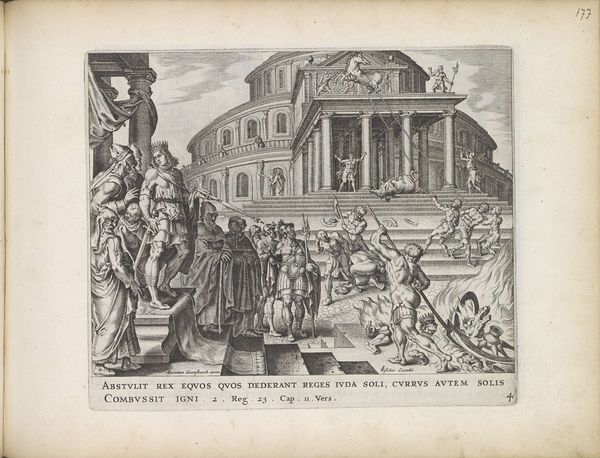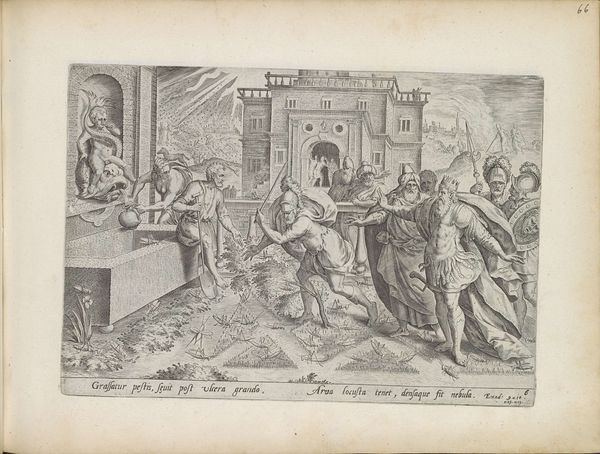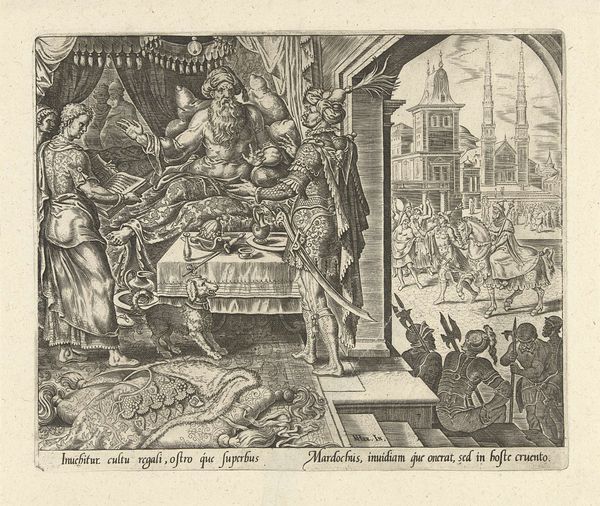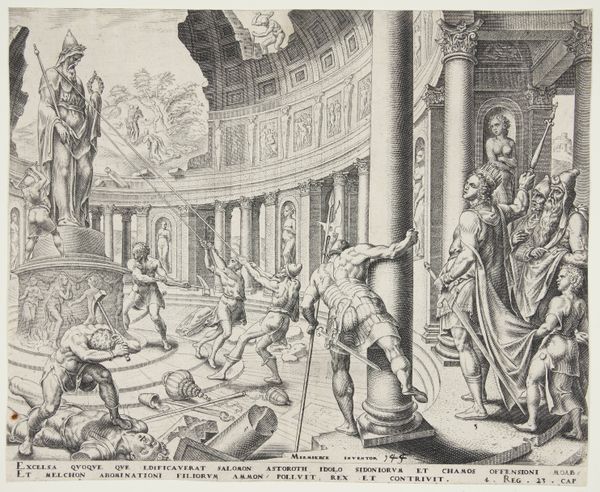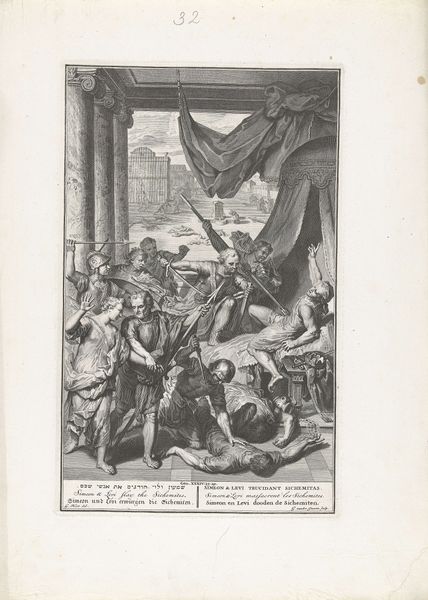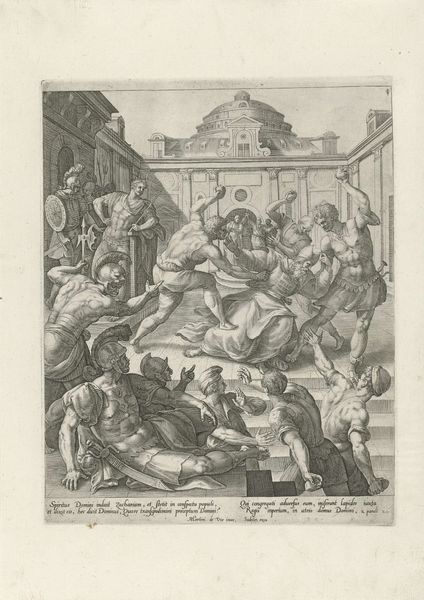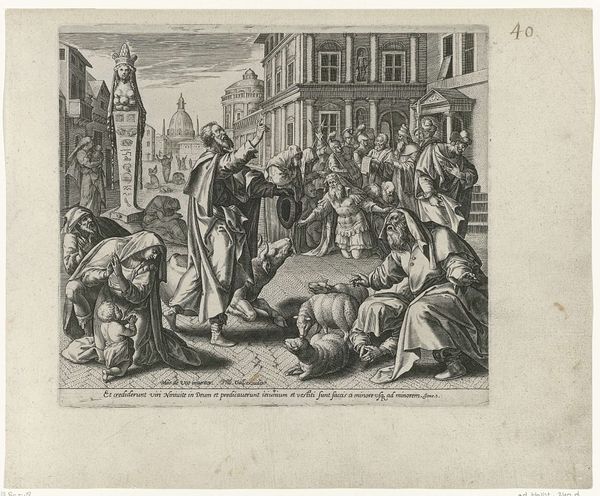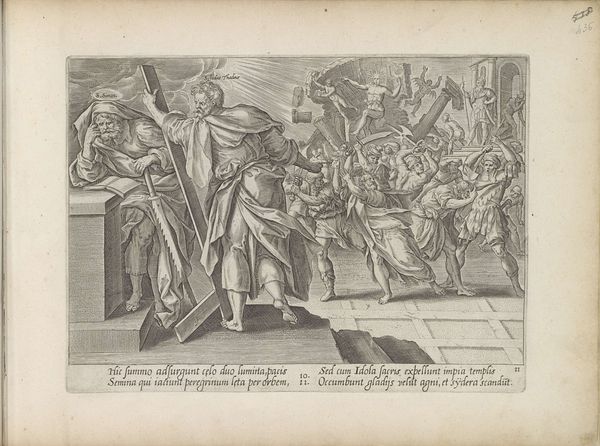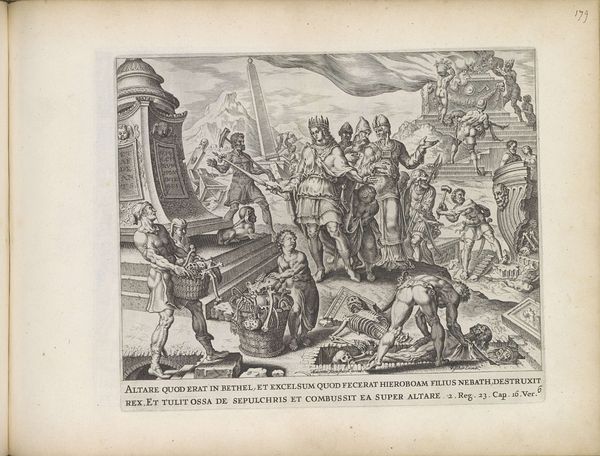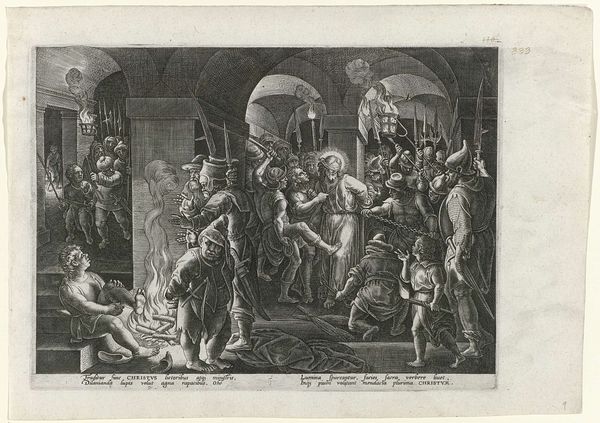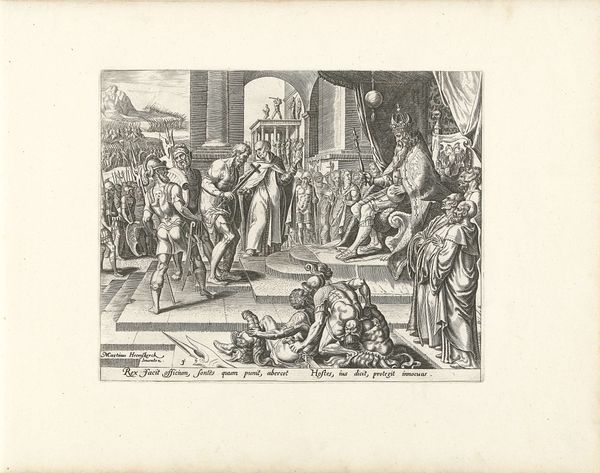
print, engraving
#
narrative-art
#
baroque
# print
#
figuration
#
history-painting
#
engraving
Dimensions: height 215 mm, width 255 mm
Copyright: Rijks Museum: Open Domain
Curator: Look at this fascinating engraving, "Koning Josia verwoest de tempels van Astarte, Kemos en Milkom," dating back to 1643, currently held at the Rijksmuseum. Editor: It's chaotic. The eye struggles to settle. Figures in the foreground, that architectural space behind them—everything feels densely packed, and active. Curator: This piece really captures the intensity of religious reform, doesn't it? We see King Josiah, a figure of righteous authority, orchestrating the destruction of pagan temples. Consider the socio-political context: iconoclasm was a powerful tool for asserting religious dominance. Editor: Agreed, but the composition contributes. Notice how the lines of action converge towards the central figures, all diagonals really stressing movement. It is dynamic in a theatrical sense and somewhat busy. The figures almost overwhelm the temple itself. Curator: Absolutely, and it speaks to the role of visual propaganda. The image reinforces the legitimacy of Josiah’s actions. Note, also, how the artist utilizes scale to emphasize Josiah’s authority—look how much taller he is compared to the men actively demolishing the temple. Editor: It also showcases a contrast. The stark, rigid verticals of the classical architecture, columns, arches, act almost as counterpoints to the twisting bodies of the iconoclasts. Are we meant to read into that dissonance between order and destruction? Curator: Precisely! I think you’re picking up on how art from this period served very direct ideological functions. Editor: Thanks, it seems impossible not to appreciate the artistry of this image even when disagreeing with the ideological goals, doesn’t it? Curator: Indeed. Examining its historical and social role only enriches its viewing, wouldn’t you agree?
Comments
No comments
Be the first to comment and join the conversation on the ultimate creative platform.
